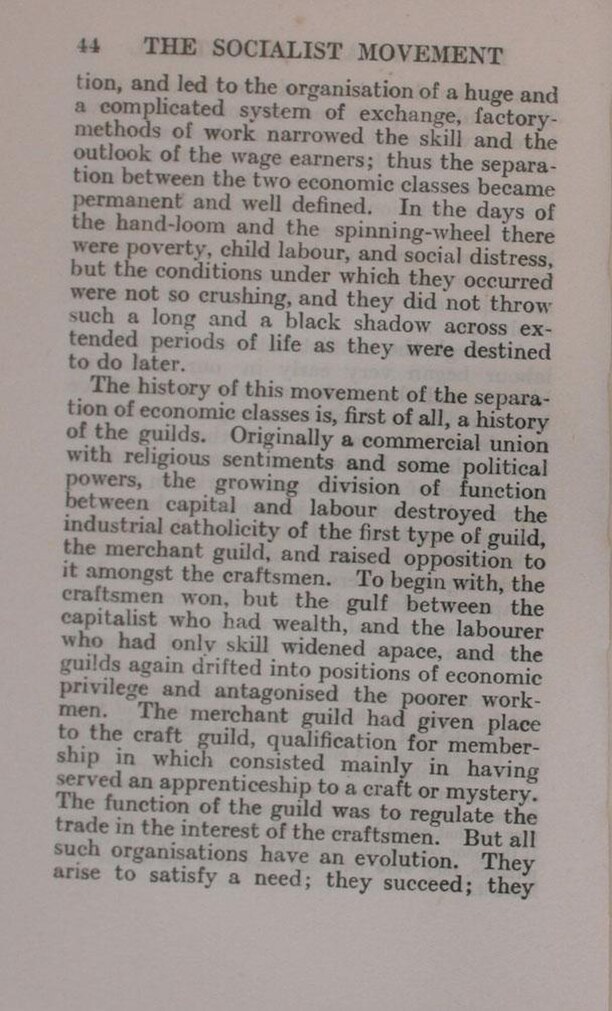tion, and led to the organisation of a huge and a complicated system of exchange, factory-methods of work narrowed the skill and the outlook of the wage earners; thus the separation between the two economic classes became permanent and well defined. In the days of the hand-loom and the spinning-wheel there were poverty, child labour, and social distress, but the conditions under which they occurred were not so crushing, and they did not throw such a long and a black shadow across extended periods of life as they were destined to do later.
The history of this movement of the separation of economic classes is, first of all, a history of the guilds. Originally a commercial union with religious sentiments and some political powers, the growing division of function between capital and labour destroyed the industrial catholicity of the first type of guild, the merchant guild, and raised opposition to it amongst the craftsmen. To begin with, the craftsmen won, but the gulf between the capitalist who had wealth, and the labourer who had only skill widened apace, and the guilds again drifted into positions of economic privilege and antagonised the poorer workmen. The merchant guild had given place to the craft guild, qualification for membership in which consisted mainly in having served an apprenticeship to a craft or mystery. The function of the guild was to regulate the trade in the interest of the craftsmen. But all such organisations have an evolution. They arise to satisfy a need; they succeed; they
